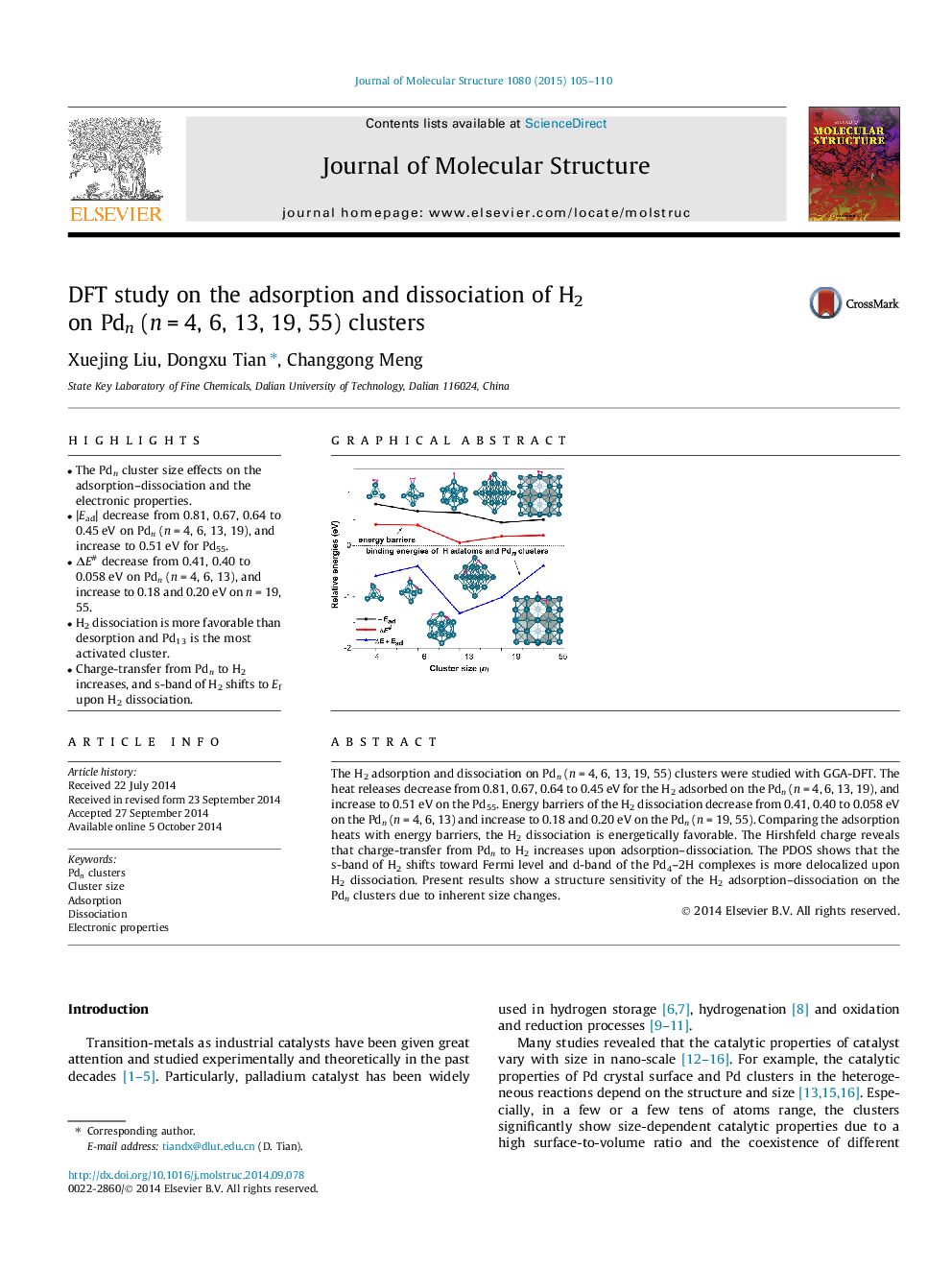| Article ID | Journal | Published Year | Pages | File Type |
|---|---|---|---|---|
| 1402127 | Journal of Molecular Structure | 2015 | 6 Pages |
•The Pdn cluster size effects on the adsorption–dissociation and the electronic properties.•|Ead| decrease from 0.81, 0.67, 0.64 to 0.45 eV on Pdn (n = 4, 6, 13, 19), and increase to 0.51 eV for Pd55.•ΔE# decrease from 0.41, 0.40 to 0.058 eV on Pdn (n = 4, 6, 13), and increase to 0.18 and 0.20 eV on n = 19, 55.•H2 dissociation is more favorable than desorption and Pd13 is the most activated cluster.•Charge-transfer from Pdn to H2 increases, and s-band of H2 shifts to Ef upon H2 dissociation.
The H2 adsorption and dissociation on Pdn (n = 4, 6, 13, 19, 55) clusters were studied with GGA-DFT. The heat releases decrease from 0.81, 0.67, 0.64 to 0.45 eV for the H2 adsorbed on the Pdn (n = 4, 6, 13, 19), and increase to 0.51 eV on the Pd55. Energy barriers of the H2 dissociation decrease from 0.41, 0.40 to 0.058 eV on the Pdn (n = 4, 6, 13) and increase to 0.18 and 0.20 eV on the Pdn (n = 19, 55). Comparing the adsorption heats with energy barriers, the H2 dissociation is energetically favorable. The Hirshfeld charge reveals that charge-transfer from Pdn to H2 increases upon adsorption–dissociation. The PDOS shows that the s-band of H2 shifts toward Fermi level and d-band of the Pd4–2H complexes is more delocalized upon H2 dissociation. Present results show a structure sensitivity of the H2 adsorption–dissociation on the Pdn clusters due to inherent size changes.
Graphical abstractFigure optionsDownload full-size imageDownload as PowerPoint slide
